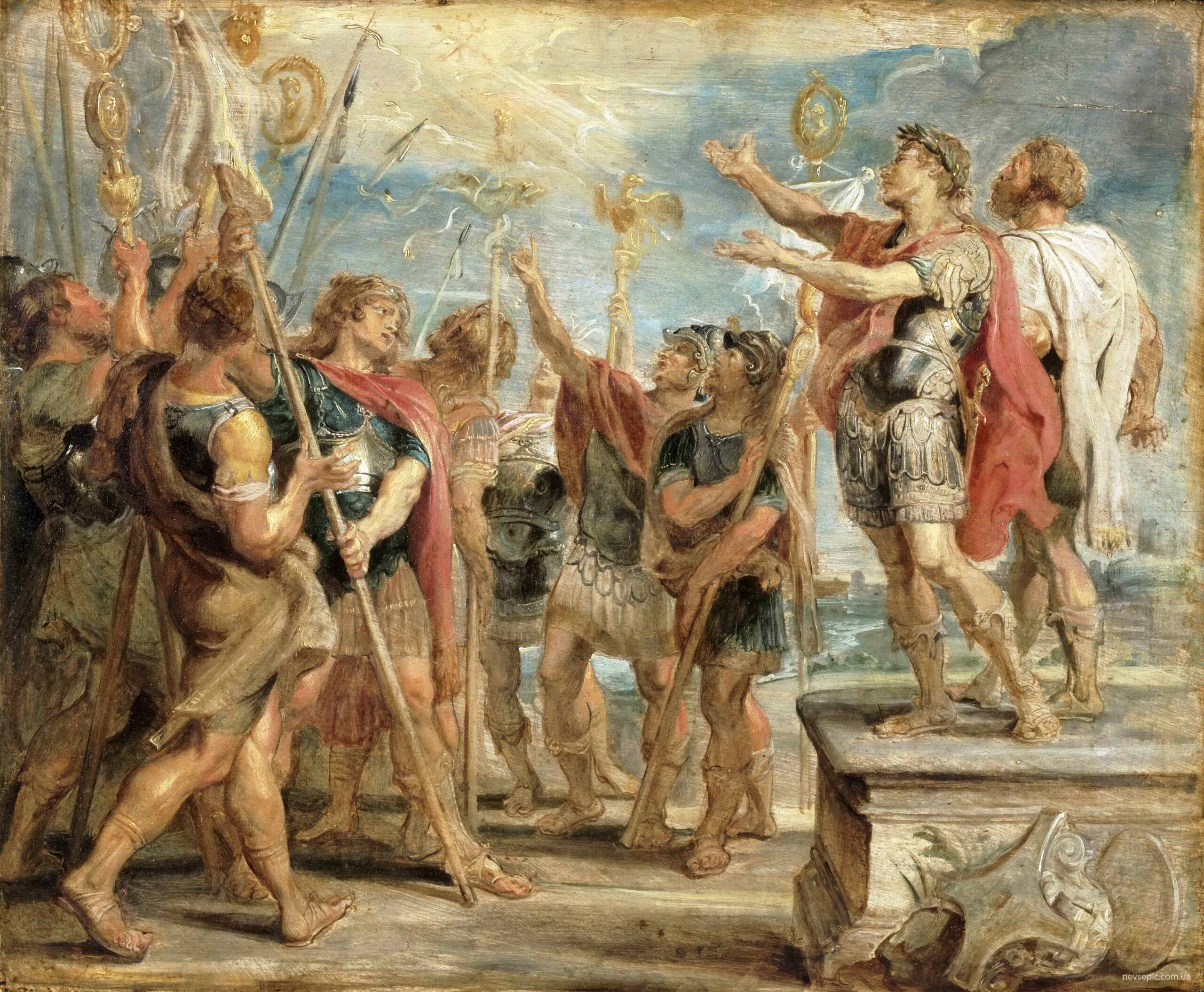In 312, the year before he associated himself with the edict of toleration, Constantine had a religious experience akin to that of Paul. Just before going into battle against his rival Maxentius, the emperor supposedly saw in the heavens the sign of a cross against the sun and the words, “Conquer in this sign.” He put the sign on the battle standards of his army, won the battle, and attributed the victory to the Christian god.
Though the story has been challenged, there is little evidence for the counterargument that Constantine acted because he simply foresaw the eventual triumph of Christianity, since few at this time would have predicted such a victory and his army remained predominantly pagan. Though he continued to appease the sun god as well as the god of the Christians, Constantine regarded himself as Christian.
One last formal attempt was made to reconstruct the old polytheism of the Empire. The emperor Julian, called “the Apostate” (r. 361-363), a pagan and philosopher much influenced by the Neoplatonists and in particular by Plotinus (205-270), sought to merge the old classical and rational philosophies with the mysticism of Egypt. However, Julian’s restoration of paganism died with him, and Christianity quickly regained and extended its position.
In 375, Emperor Gratian gave up the title Pontifex Maximus, so dear to Claudius and Domitian, and refused to use the public treasury to support popular pagan festivals. At last Theodosius I (r. 379-395) made Christianity the official religion of the Empire, abolished the pagan calandar, and in 394 he began to persecute pagans. Paganism continued in the countryside, in the army, and among the upper classes and the intellectuals for another century or so, but in the cities it was no longer an organized force.

